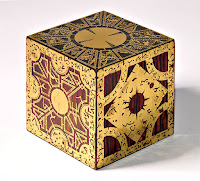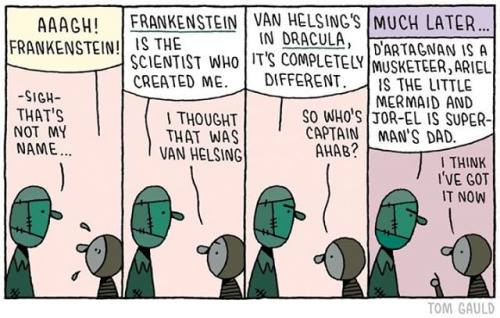First off, so very sorry post have been irregular here as of late. Believe I’ve mentioned I’m juggling a few things. One of which is the con I’m at right now.
But we’ll talk about that in a bit…
This week I wanted to revisit an idea that I’ve brought up
a couple of times over the
past few months.
I’ve heard it called a few different things, but my preferred term has always been
flow.
First heard it that way from a wonderful author and writing teacher named Drusilla Campbell, and it always stuck with me.
The visual I’d like to put in your head for flow is traffic. Regular old automobile traffic. I’m going to go out on a limb and guess most of you reading this can drive, and the few who don’t have still ridden in a car. And hopefully most of you have been to a city, or at least on a highway of some kind.
So… let’s talk about the flow of traffic.
 Living in Los Angeles
Living in Los Angeles (and before that San Diego, and before that the greater Boston area), I’m very used to highway traffic.
Sometimes, often late at night, the highway is clear and wide open.
There’s barely anyone on the road and you can pretty much fly.
Of course, even if there aren’t many cars on the road, something big can still create a traffic jam. Major construction or a big accident can condense things down to one lane, and suddenly that very open road is densely packed and moving at a crawl.
During the day it can be even worse. When there’s a million people on the road (no exaggeration here in LA) one small problem can slow everything down. A large one can bring things to a crashing halt. Hell, there’s a big hill on the 405 through the Sepulveda Pass and it always causes traffic slowdowns, both ways, up and down. I’ve been in traffic jams so bad you could actually shut your car off, get out, and stretch your legs for a bit.
There are places where the very structure and layout of the freeway just naturally causes traffic jams. There’s no way to avoid it the way things have been constructed. I know a couple stretches where—for no reason—the road goes from six lanes to three. And then back up to five. That mile of three lanes… it’s almost always clogged.
Traffic patterns can even get messed up when people just start looking at the wrong thing. We’ve all been in massive slowdowns that are simply caused by people staring at something on the side of the road. Or sometimes on the other side of the road. A big accident in the northbound lane can make everybody in the southbound lane slow down to take a look.

Sometimes it works great, though.
Those million people can be on the road and it’s fantastic.
Everything works.
I’ve had times when I’ve been looking at all the cars on the road, but then looked down to realize I’m almost doing sixty-five.
We’re
all going at almost sixty-five, in perfect sync.
I was just caught up in everything and didn’t even realize what was actually going on.
But that flow can get disrupted so easily. Again, one car going really slow. One closed lane. One distraction over on the shoulder.
What’s the point of this little visualization?
Reading a story is a lot like traffic. It has a flow. When the flow’s great, we barely notice how fast things are going. We just zoom along and suddenly realize we’ve read a hundred pages and it’s dark out and where the hell am I? A book that you can’t put down has great flow. A book that you should love but you just can’t get into… probably doesn’t.
Here’s a few things that have the potential of causing a traffic jam in my story.
Switching Tenses/Formats/POVs
A friend of mine has a book where the main character slips into sort of a fever dream. She’s sick, she’s been medicated, and now she’s… a bit out of it. And so the next two chapters of the book are in stage play format. It becomes a bit more separated from reality for the reader and we understand it’s more surreal for the character as well.
Compare this to another book I read recently when, for no reason, maybe 15-20% of a page would suddenly be in
screenplay format.
Dialogue, prose, prose, slugline, dialogue, stage direction, prose, dialogue.
It jarred me out of an otherwise wonderful book every single time, and the author did it every four or five pages.
I looked for patterns and tried to figure out if there was a recurring motif, but couldn’t find anything.
I loved the story, but I kept getting knocked out if it.
There’s nothing wrong with doing clever things. It’s highly encouraged. But I need to have a reason to do them, because my readers are going to assume there’s a reason I did it. That’s natural, isn’t it? I made the effort to put it in the book, so there must be a point to it. Bruce Joel Rubin once mentioned that when we stop experiencing stories in our gut, we go into our head and start analyzing them. That’s when the flow breaks. When we stop reading and start drawing mental diagrams.
Names
I was reading this big sprawling generational family saga recently.
Not normally my kind of thing, but I’ve been trying to
expand my reading umbrella lately.
And I’m overall glad I read it.
But…
One issue it had was that, by nature of being multigenerational, there were lots of people who were called “Dad,” and quite a few who were “Mom.”
And they were all
Dad and Mom.
No “Pops” or “Papa” or “Daddy Dearest.”
No “Mum” or “Ma” or “Mother.”
Which got confusing because the book also jumped POV and timeframes a lot.
We might be in Yakko’s head for a chapter, then hop over to his granddaughter’s.
Which meant “Dad and Mom” is now referring to different people.
Some of them even had the same name, so there was a Yakko Jr. and a Yakko the III (fortunately grandpa had died)
Anyway, what it amounted to was me going back to analyze the book every ten or fifteen pages to make sure the person behind this POV was who I thought they were.
This is closely related to something else I’ve mentioned before—when lots of people have
very similar names, especially when they all begin with the same letter.
We naturally lock on to that first letter to help keep things straight in our heads. If my story has a large cast featuring John, Jerry, Jacob, Jared, Justin, Jean, Jon, Jeri, Juan, Jenn, and Jess, people are (again) going to spend just as much time going backward to figure out who’s who as they are going forward to, well… read my story.
Vocabulary
We work with words. That’s a simple fact of the job. And nobody wants to use common words. We want to work with amazing words. Exciting, sexy, awe-inspiring words that people will remember years from now. Decades from now, even.
But here’s the thing to remember. The words don’t really matter. The story matters. The characters matter. The actual words are just a delivery device. They’re how I’m telling you the story. As a writer and a reader, I don’t want to be focused on the act of communication more than what’s being communicated. The words should be almost invisible.
And the truth is… the common words are going to be a lot less visible than the uncommon words. As readers—as people—we notice the uncommon. It stands out. And in many cases… it’s distracting.
This isn’t to say we can’t use uncommon or obscure words. There should be
a reason for using them, though, and that reason shouldn’t just be me wanting to show off
the obscure word I learned on Doctor Who a few months ago.
They shouldn’t be stumbling blocks for my reader.
Again, they should be adding to the story, not the delivery device.
That’s just a few things.
I’ve mentioned
some others before.
Flow is kind of tough to get too specific about because something that causes a small bump for me might be slamming you into a metaphorical wall.
Or vice versa.
Y’see, Timmy, that’s the biggest lesson about flow.
It’s
an empathy issue.
It’s about being able to put myself in someone else’s shoes—a lot of other people’s shoes—and make an honest assessment about things.
Will
this reference trip people up?
Is this structure confusing?
Is it easy to keep all these characters straight?
Because if I can’t be honest about my work, there’s a good chance I’m going to jam things up.
And if that happens too often, to stick with our traffic metaphor… people will start looking for alternate routes.
Next time, I’d like to talk about that opening chapter. You know what I mean. The P word. Although, fair warning, next time might not be for two weeks or so.
Oh, and hey—I’m at
Phoenix Comic Fest right now!
Are you reading this? You should come find me. I’m that guy typing on his phone. And also talking on panels and signing stuff and all that.
Come by and say hi.
And then go write.
 And I think this holds for character traits overall. If I’m going to spend three paragraphs describing her clothes, his drinking habits, their sexual experiences in college, how she turned down her birthright and he never worked for anything… well, my readers are going to assume this is important. I wouldn’t just be writing all this out for no reason, would I? I’m a professional, after all. There’s a plan to all of this, and it’s a plan of my own careful devising.
And I think this holds for character traits overall. If I’m going to spend three paragraphs describing her clothes, his drinking habits, their sexual experiences in college, how she turned down her birthright and he never worked for anything… well, my readers are going to assume this is important. I wouldn’t just be writing all this out for no reason, would I? I’m a professional, after all. There’s a plan to all of this, and it’s a plan of my own careful devising. Anyway, I bring it up because a couple of you have posted some rather *coughs* emphatic responses to things lately. And while I greatly appreciate the enthusiasm (and the comments), I prefer to keep things at a level that doesn’t get blocked by a lot of web filters. Alas, the only real moderation tool I have here is a delete button, and I’ve had to resort to that. Many apologies if your comments vanished in the (tiny) purge. Again, they’re appreciated but…
Anyway, I bring it up because a couple of you have posted some rather *coughs* emphatic responses to things lately. And while I greatly appreciate the enthusiasm (and the comments), I prefer to keep things at a level that doesn’t get blocked by a lot of web filters. Alas, the only real moderation tool I have here is a delete button, and I’ve had to resort to that. Many apologies if your comments vanished in the (tiny) purge. Again, they’re appreciated but…








